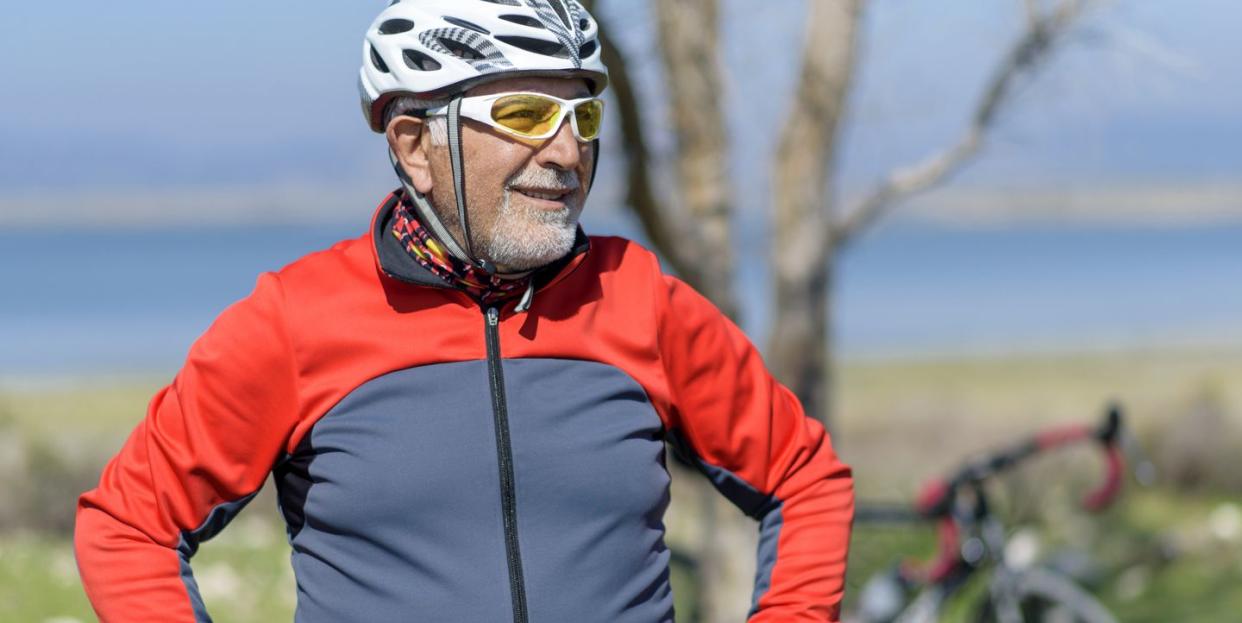Are You at High Risk for a Blood Clot? These Health Issues Could Up Your Chances

According to a new study in the journal Blood Advances, having health issues such as high blood pressure, high cholesterol, diabetes, or obesity can increase your chances of developing a blood clot.
Regular exercise can help reverse the above health issues, lowering your blood clot risk.
The Office of Disease Prevention and Health Promotion recommends getting 150 to 300 minutes of moderate aerobic exercise per week or 75 to 150 minutes of intense aerobic exercise per week.
Dealing with high blood pressure, high cholesterol, diabetes, or obesity are all solid reasons to make more time in your schedule for riding. Not only are you working to reverse these health issues, but you’re also doing yourself another favor: You could be lowering your risk of blood clots.
Recent research published in the journal Blood Advances found that people with these health problems—which can all be part of a condition called metabolic syndrome, essentially a group of risk factors for developing the issues—are more likely to experience recurrent blood clots.
Using a statewide database, the Indiana Network for Patient Care, researchers analyzed data from just over 150,000 patients who’d been diagnosed with deep vein thrombosis (DVT) between 2004 and 2017. They compared the data for subsequent blood clot events to metabolic syndrome components.
Among those who’d had DVT—usually involving blood clots in the legs—about 68 percent had also been diagnosed with at least one metabolic condition. Those who only had one issue were at 14 percent higher risk of additional blood clots than those without any metabolic conditions. With two of them the risk went up to 21 percent, with three the risk went up to 30 percent, and with four the risk went up to 37 percent.
DVT is a form of venous thromboembolism (VTE), and according to the American Heart Association, VTE affects between 300,000 to 600,000 Americans each year. Blood clots form in the veins and can break off and travel through the bloodstream to the lungs, affecting respiratory function.
“If patients have VTE recurrence, their quality of life drops—and it drops a lot,” Lauren Stewart, M.D., lead study author and assistant professor of emergency medicine at Indiana University School of Medicine, told Bicycling.
One way to lower risk would be to address the kind of conditions that are part of metabolic syndrome, such as elevated levels of glucose, fats, and cholesterol in the blood, high blood pressure, and obesity. Diet plays a big role for all of those, but exercise can as well, Stewart said.
“The good news is that all four of these conditions can be treated and modified,” she said.
In a 2013 study in the journal Blood Pressure, sedentary older adults reduced their systolic blood pressure (the top number) by almost 4 percent diastolic blood pressure (the bottom number) by 4.5 percent when they began following a consistent cardio routine.
Exercise can also have a profound impact on diabetes, according to a statement from the American College of Sports Medicine and the American Diabetes Association, which noted that participation in regular physical activity “improves blood glucose control, and can prevent or delay type 2 diabetes, along with positively affecting lipids, blood pressure, cardiovascular events, mortality, and quality of life.”
[Find 52 weeks of tips and motivation, with space to fill in your mileage and favorite routes, with the Bicycling Training Journal.]
Fitting in time each day for moderate exercise (30 minutes or more a day of brisk walking, dancing, or gardening) or vigorous exercise (20 minutes or more a day of running, fast cycling, or aerobic exercise) can lower your heart disease and stroke risk by 11 percent, according to a 2019 study in the European Heart Journal.
Plus, according to the Office of Disease Prevention and Health Promotion’s (ODPHP) physical activity guidelines for Americans, adults should get 150 to 300 minutes of moderate aerobic exercise per week or 75 to 150 minutes of intense aerobic exercise per week.
New to cycling or haven’t ridden in a while? Here are a few tips for the saddle:
Set a long-term goal and/or find a group ride to help you get in the habit of cycling regularly.
Log your miles gradually—doing too much too fast can cause injury or burnout.
Change up your routes—getting familiar with both roads and trails can give your rides variety.
You Might Also Like

